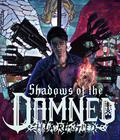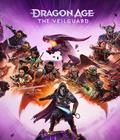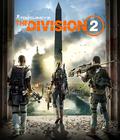Buy Tom Clancy's The Division 2
The Division was the first of many Ubisoft games that had fascinating trajectories. The title came out to very positive reviews from critics, but once the public got hold of the game, things began to fall apart. Bugs were commonplace, servers had some problems, and the endgame content was barely there if you didn't fancy multiple trips to the Dark Zone. While the game was getting trashed publicly, Ubisoft kept working on it, and after several patches, The Division became so good that players came back, and everyone was happy again. With Tom Clancy's The Division 2, Ubisoft and Massive Entertainment hope that the bad parts of history don't repeat themselves.
The story is set roughly more than six months after the events of the first game. The viral outbreak that hit New York has spread nationwide, and while it hasn't been contained, it has been controlled well enough to stop a full-on apocalypse. A rebuilding process has begun, but with the country in a near-lawless state, survivors cope with the chaos of gang invasions while the Joint Task Force and The Division try to stop things from devolving even further. While trying to fend off another attack, you get a distress call asking for all available Division personnel to help out in the latest hotspot: Washington, D.C.
The game assumes that you know about the setup of the first title, as it spends no time rehashing the details. Instead, it opens up with a narrated montage about how things got worse, but humanity continues to survive. There's an opening cut scene about how you're there to clean things up, and that's all the story you're going to get. You still have the various audio logs and holographic echoes that give you a glimpse of how Washington, D.C., was during the New York incident, and they provide some good backstory, but that's about it. Like most of the Tom Clancy games except for the Splinter Cell series, characters are vessels for telling the story and nothing more. There are a few different personalities you'll encounter, but you'll forget about the names of anyone remotely important in only a few missions. It also doesn't help that your character is another silent protagonist whose participation in many conversations is a simple nod or blank stare.
For those unfamiliar with the core mechanics of the first game, The Division 2 is a standard cover-based shooter. You'll be darting from full pillars to cars to waist-high walls, dashing and tumbling as you go between them, since you're not durable enough to last more than a few shots. Health is slightly regenerative but armor isn't, forcing you to seek out and stockpile armor refills or take out everyone in order for an automatic refill to kick in.
While guns and grenades are the main weapons, you have plenty of tools to deal with skirmishes. Some devices, like the ping tool, let you locate enemies even when they're hiding behind walls. Turrets and drones are self-explanatory, but all of your tools can be modified for different functions. The drone, for example, normally seeks out single enemies and peppers them with machine gun fire, but you can have it blind enemies with a flash instead. There are enough modifications so you can play offensively or defensively — or a mix of both — giving you a variety of strategies.
The game's mantra this time around is that of improvement in every category possible, and the shooting aspect receives a fair bit of that. In particular, the title has toned down enemy reactions to gunfire to be somewhat realistic. Most enemies still don't go down with a well-placed headshot, but it only takes a few bullets to take out an enemy instead of half a clip. Armored enemies can take on more shots, but whittling away at their protection is less of a chore this time around, and once that armor is gone, a few well-placed shots can down them. Only the strongest of bosses are bullet sponges, but since they're so few and far between, their defiance of realism is acceptable rather than lamentable.
Enemy behavior has also been improved significantly, even during the early fights. Rushers may seem dumb because they go in for melee kills, but they don't take straightforward routes, so they're tough to hit. Enemies with guns never stay in one place for long. Grenadiers throw at every opportunity but graduate to using remote control cars for their hits. The use of various tools is what sets apart the enemies in The Division 2, as they use drones, poison gas, and turrets, just to name a few. They even heal themselves when they're not being fired upon. In short, some firefights can make you feel like you're facing human players, considering how varied their reactions and attacks are. The only flaw is that they don't react to any grenades you throw at them, even if it lands right next to them.
Although it may not initially seem like a significant thing, the change in locales does wonders for the combat. The abandoned buildings and ruined streets are still there, but the presence of wild animals and vegetation means that nature is reclaiming the apocalyptic setting. This also means that there are more places for enemies to hide and more chances for shots to hit something else instead. There are more landmarks used here when compared to the first game, and that includes a few museums, where skirmishes feel like they're taking place in another time or world instead of in the near future. The game may be taking place in the summer, but the inclement weather system means that visibility can drop significantly or that footsteps can be disguised due to the pouring rain. In other words, Washington, D.C., does a better job of making the combat feel more dynamic than the eternal snowscape of New York City.
Since the location isn't used too often in open-world games, Washington, D.C., is the perfect place to explore, and the game constantly rewards your curiosity. There are more nooks and crannies hiding stray chests with loot and materials. The lore items, like recordings and echoes, are spread out more, with some of them transforming the environment into small puzzles as you figure out how to climb up scaffolding or lower winches to climb to higher places.
Thanks to both the amount of time that has passed and the game's chosen season, the world feels less empty this time around. Enemy patrols are still here, so firefights occur more frequently, but you'll also run into some random events, like having to hack propaganda speakers or stopping public executions. New to the game are roving bands of JTF forces and civilian militia. You'll see them going on patrol or carrying supplies, but you'll also see them engaging in firefights with the roving gangs of each district. They're surprisingly competent fighters, and they prove it when you call on backup for a control point takeover. They provide cover fire, operate turrets and distract enemies. This still isn't a bustling city full of people crowding the sidewalks, but the world feels more alive since there are a few more people roaming around.
The White House acts as your main base of operations, but the presence of more people leads to settlements. You'll upgrade both the White House and the settlements, and the new additions affect civilian life positively. As in the prior game, opening up new additions to the settlements gives you new blueprints, so you can craft new features, items and weapons. Some of the missions don't require you to return to the settlement to complete them, so you can complete a bunch of them at a time if their only requirement is that you find specific items.
The multitude of missions and incidental activities gives you plenty of XP opportunities, but it also highlights the abundant loot. Just about everything you do here gives you loads of loot. Take over a control point, and you open up a safe room with a sizeable stash. Level up, and you get a good amount of armor and weapons. Finish any mission, and the loot comes pouring in. There's so much of it that it's common to fill up your backpack unless you're frequently stashing things away, selling them, or dismantling them. Your guns now have more detailed stats, such as bullet drop, bullet strength, clip size, damage, and rate of fire. Few games are this granular, including some of the more recent Tom Clancy titles. For gun enthusiasts, the stats are a welcome surprise.
While the whole game can be played completely solo, The Division 2 was meant to be an online multiplayer experience. Those who are looking for a PvP experience will get it thanks to a simple team deathmatch mode in a 4v4 setup, and it works fine, but the real meat comes from the PvE of the campaign. Every single mission can be tackled with that four-person squad, and if you don't mind the load times, all of the co-op is of the drop-in/drop-out variety. Squads can be formed up at any point instead of only at the bases and safe houses, but the menu navigation to jump into another game or start one means that doing this in the middle of a firefight is a good way to get killed instantly. As expected, the performance is smooth, and connections have been lag-free thus far. About the only annoyance some people may have is that there's no way to turn off help notifications from others, so if you want to play solo, you're going to have to suffer through distress calls from other agents.
Then there are the Dark Zones, The Division's signature mix of PvE and PvP. As in the prior title, some of the strongest enemies reside here, but the risk is worth it due to the high caliber of loot. The foes are a threat, but human ones are more of a threat since they can also go out of their way to shoot you and steal the loot for themselves. There's now enough of a warning to everyone when a human player is going rogue and attacking others. There are now three Dark Zones to play in, and each is scaled accordingly, so going in at a fairly low level doesn't mean instant death.
Even if you don't include the Dark Zones, The Division 2 is long. The review guide provided by Ubisoft suggested that a straightforward run of the main missions could take around 15 hours, but that only seems plausible if you ran around with other players throughout the campaign, always had the best loot drops, and never died. Realistically, with all of the side activities to perform and random skirmishes to deal with, finishing the campaign is a 35- to 40-hour affair. The length is appreciated for a game like this, but what's more impressive is how nothing feels old throughout that journey. Every firefight is exciting, since you're constantly surprised by the enemy's strategies. The guns feel good to shoot, and their many variations mean it'll take a long time to get the perfect loadout, even before gun mods come into play. The grind to level up doesn't feel like a grind, and there's a persistent desire to play just one more mission.
When you beat the campaign, you'll see that the developers have added a substantial amount of endgame content. A new enemy faction appears with robots in tow, making for stressful firefights no matter your loadout. There are plenty of missions with boss encounters, control points and strongholds, so the end of the campaign feels arbitrary since it feels like a natural next chapter instead of something small. More importantly, the endgame introduces you to classes; this makes The Division 2 fall in line with other loot shooters, as you now have something to specialize in even though you can easily switch between classes. As expected, each class has different weapons and perks that complement other classes when you're playing with others. Demolitionists, for example, can be loud and take out swaths of enemies at a time, while Sharpshooters can hang back and pick off anyone who's not caught in the explosions. The change from being a general soldier to a specialist is transformative, since it changes your approach to missions and keeps you engaged.
What will be interesting is how the year of post-game content is going to play out. Like many of the big multiplayer games, all of the content for the upcoming year is going to be free in order to prevent the community from splintering. There have been three packs announced so far, but without any details, it's tough to say how substantial each pack will be and whether each one will have enough room to breathe before the next pack hits. Those who shelled out extra cash for a premium edition can access those expansions a week early. In today's gaming climate, the early access might not mean too much, but it'll be interesting to see how many players are willing to pay to gain the time advantage.
The biggest accomplishment with The Division 2 is normally expected from sequels. Namely, the game really feels like an improvement over its predecessor. That almost seems like a backhanded compliment until you realize that the big names in the large multiplayer loot-based shooter subcategory failed in this regard. Destiny 2, for example, was content to re-create every mistake from the first title instead of building on Rise of Iron. Like The Taken King, Forsaken has proven to be a redemption point for Bungie's game, but the damage had already been done. Meanwhile, Anthem decided to double down on mistakes made by other titles by having good shooting mired by loading screens, technical mishaps, and a lackluster story — the most surprising of all, when you consider Bioware's pedigree. In light of this, The Division 2 makes Massive look like masters of the genre for now.
Graphically, the game is very good most of the time. As you would expect, the character models come in with a good amount of detail, and their animations look great. The little touches, like the closing of car doors and sliding or tumbling into cover, are still present and are still cool to look at, considering how other games don't bother with such flourishes. Particle effects are still abundant, and the frame rate holds steady at a locked 30fps no matter what's happening or how many characters are on-screen simultaneously. The game only bothers to load whenever you're respawning or switching between multiplayer sessions, but that seems to come about due to a sacrifice in textures and other details. No matter how slow you go, you'll often see objects pop in the distance. Running through the world often gives you blurry textures that take a noticeable time to load. This was all seen on a PS4 Pro on a 1080p screen with supersampling, and changing the resolution to native 1080p didn't change a thing.
Sound-wise, the title performs just as well as before. The characters may not be memorable, but their vocal performances are top-notch. Everyone, from a regular civilian to a commanding officer, is believable when they speak. Even the most pedestrian of lines is spoken with realistic conviction. The music is pulse-pounding whenever it plays over battles, and every little skirmish is made into epic battles because of it. The effects are where the sound really shines, especially the use of surround, which really pops during battles. The sound of bullets hitting walls behind you does a great job of immersing you in the game.
Like most of Ubisoft's recent titles, the true verdict for Tom Clancy's The Division 2 will only be known after some time has passed. For a game that's being billed as a service, the following months will be the true indicator of whether the content is substantial enough and whether the community is willing to stick around to see it through. For now, it looks like the development teams have learned from past decisions and improved upon them. All of the good traits from the first game have been amplified, and the changes feel like better implementations of the original ideas. The endgame content is substantial, and the introduction of classes so late in the game changes things enough to make the experience feel renewed. Add to that the promise of lots of free future content, and you have a loot shooter that is well worth your time.
Score: 8.0/10
More articles about Tom Clancy's The Division 2










 Tom Clancy's The Division 2 is a shooter RPG with campaign, co-op, and PvP modes that offers more variety in missions and challenges, new progression systems with twists and surprises, and fresh innovations that offer new ways to play.
Tom Clancy's The Division 2 is a shooter RPG with campaign, co-op, and PvP modes that offers more variety in missions and challenges, new progression systems with twists and surprises, and fresh innovations that offer new ways to play.






















































